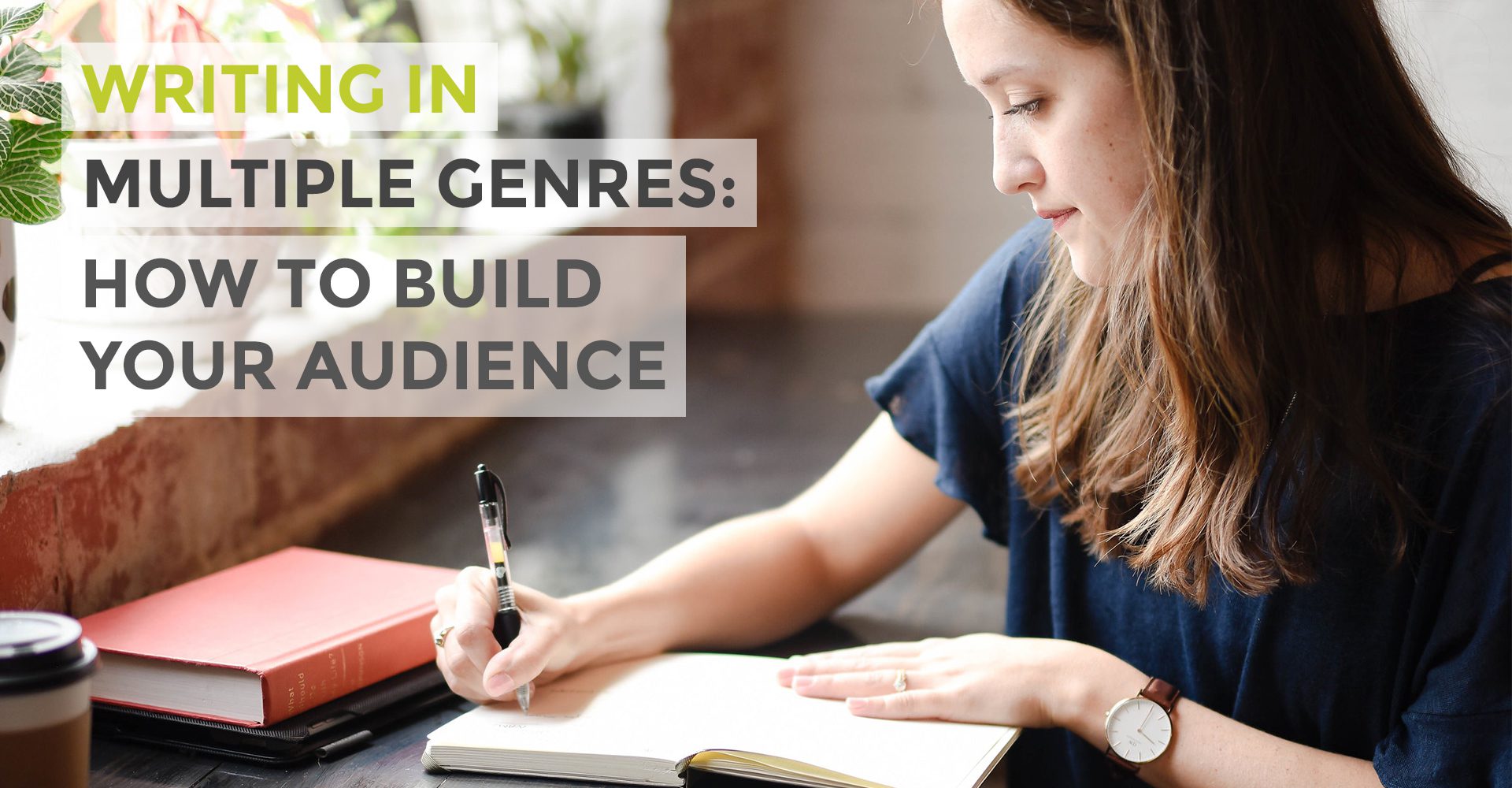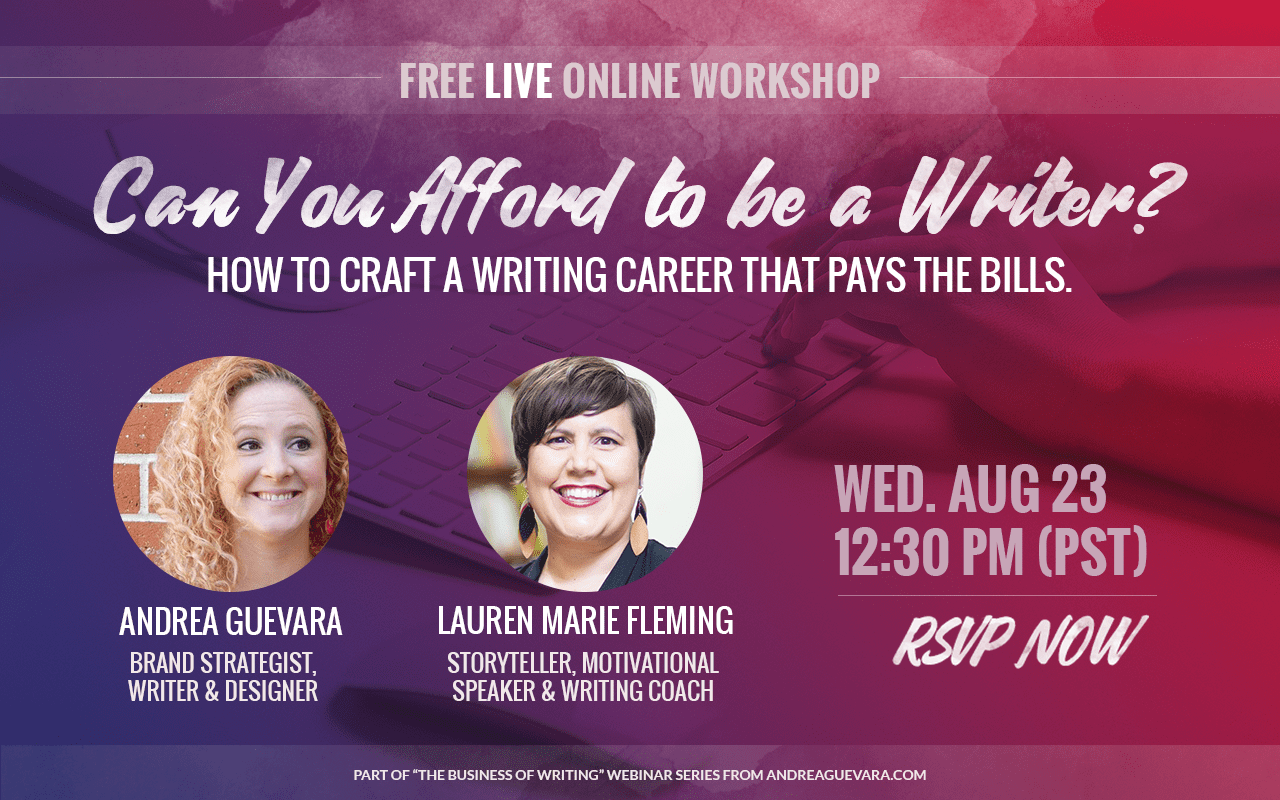Being a professional writer is only half about writing that book, or screenplay (or whatever your big project is). The other half is actually getting someone to read your work.
When I first started writing, a friend and I went to a day-long seminar about how to market yourself as a writer. It was a clusterf#$k of information. We were totally intimidated and overwhelmed because all we wanted to do was write well and have said writing get in front of some eyeballs.
We were not ready for the glut of work it actually takes to sell your writing.
Writing and marketing (and branding) are two vastly different skill-sets which require different mindsets.
That’s why I’m going to go ahead and be a jerk here and say the thing that most writer marketing people won’t: if you’re just starting out and you are still just trying to figure out the HOW to write your work effectively, skip this post and go check out some of my other ones like Mind the Gap or Writing Peace. You’ll likely find these much more enjoyable.
I’m not trying to be a curmudgeon here, it’s just a waste of your precious energy to think about marketing stuff until you’re ready. And if you think about marketing too early in the game, your writing may never pass the shitty first drafts phase.
On the other hand, if all you do is think about writing, but not the promotion of it, you’ll likely end up with some beautiful writing that only a handful of people actually read. (Which hey, if that’s what you want, no worries.)
If you’re a writer who’s truly ready to think about marketing–maybe you’ve had a few things published (or are ready to), or maybe you’re even widely published and you just procured an agent, or a book deal, or you’re getting ready to publish a book yourself, or heck if you’ve even published a few books but haven’t built the readership you’re looking for–this post is for you.
Let’s get to the meat of things.
Once upon a time, you could be a nobody and have some good writing, or even just a great idea for a book and get a book deal. This would garner you a suite of promotional support from your publisher. Support in the form of money, paid book tours, marketing, etc.
Those days, for the most part are gone. You’ve likely heard this before.
You’ve probably even heard that you need to publish micro versions of your work as widely as possible and have a platform, in order to get a good book deal and/or appear to build an audience. This is also true.
But let’s talk about the thing that no one seems to be addressing–and that’s the big ol’ WHY.
Why do we think we need 5k followers on Twitter? Why are we plucking segments from our books, or offshoot subject matter and working to get it published? To get a book deal? To build an audience? Will these things actually give us what we want?
Wait, do we even know what we truly want?
Which brings me to this: We’re caring about the WRONG THINGS. That shit really doesn’t matter. I recently saw the badass Nicole Walters speak and here’s a shot of one of her slides. It’s a little blurry (my bad), but it says this:
#TruthMoment: You Care About the Wrong Things
and then under that are three words are crossed out: Traffic, Followers, Subscribers
[to be clear she’s not saying you shouldn’t care about your followers or subscribers–rather you shouldn’t care about the number of them]

I’m going to tell you something you likely already know, deep down. But that hardly anyone is saying.
Just because you got published in the NY Times doesn’t mean you have a real audience. Just because you have a ton of Twitter followers will not guarantee that they’ll buy your book. Think about it. Even if hundreds of thousands of people read your work–which is amazing by the way, I am not knocking it at all and I want this too–when it comes down to it, will they remember you?
What percentage of those readers will actually remember your name in the future? And of those, what percentage will buy your book when it comes out? What percentage of your Twitter or Facebook followers will even see your book announcements in their feed?
Did you know that most Facebook users have about 1,500 news feed items backlogged every time they login? Chances are your followers will only see about 1-2% of what you post.
Not to mention that you’re also competing with your friends’ cute puppy and kitty pictures, and political posts.
I don’t know about you, but I may read an essay, even an excellent one, then save it and share it around, but unless I already know the writer personally, I usually forget who the hell they are as time passes.
Here’s the thing that even many publishers haven’t fully caught on to yet: building your author/writer brand–and not just marketing for one book, will not only yield you more sales up front, but repeat customers in the long run.
I hear your gears turning and maybe you’re thinking, but Elizabeth Gilbert didn’t have to do that, Stephen King didn’t either.
Statistically, most of us will not have the kind of ginormous success that they have. And besides, they are not coming up right now in this vastly changed landscape. Even so, we can still be successful even if we’re not at JK Rowling status. But while there is much to learn from mega-writers, when it comes to how to market ourselves, chances are we’ll need to work harder and have a different approach.
The publishing industry has changed both a lot and not enough in the past couple decades. It has not caught up with the changes in our society, nor how people buy, nor what contributes to long-term viability.
I see that as an opportunity! It is an opportunity for a savvy writer like YOU to utilize skills from the entrepreneurial world to make bank despite the weird limbo that New York publishers are in.
Two things you can do today to build a bigger, better audience for the long run:
1. Think like an info-preneur and create a good content strategy.
Publishing work that is in line with your brand may sound like a no-brainer, but start thinking about what kind of brand kingdom you’re looking to build and make the dang blueprints to build it.
I know that’s easier said than done, heck I even struggle with this myself. But here’s an example of mismatched blueprints and construction, to illustrate my point:
Imagine you want to be known for your western mystery thrillers. Maybe that article you’re writing about the trend in bra membership sites isn’t a good match for your brand.
Maybe you’re thinking, but Andrea I have to make a living! I get it. As a single mama, more than most.
So let’s get real about what you need to do now to keep moving toward what you want, while also paying the bills. Maybe that means taking a different job, maybe that’s writing about bras for now, but having a plan for moving toward what you really want. You are the only one who can decide.
And then once you have decided, you can still create a content marketing strategy. Make a list of pieces you can write that build the brand you really want to build. Decide which will be posts on your blog, or email newsletter, and which will be pitched to publications. Then gets ta writin’.
The more volume of quality on-brand material you have, the better chance you have of getting in front of those eyeballs.
2. Enlist some easy, tangible ways to bring readers back to you.
Whenever possible on your posts or published pieces, include a link to your writer website (or at least the website spelled out if they won’t link to it). Don’t have a website? Get one! You need it! Even if it’s a one-pager, that’s okay.
But don’t stop there. The entire reason you want them to go to your website is to provide value and make contact. Have at least two ways to connect with you: an email list sign up, and an email address where they can contact you.
The goal here is to collect info. We know that social media is flooded, so while it’s great if they follow you on Instagram, it’s much better if they give you their email address. This allows you to keep in touch down the road, when you publish stories, or articles, or essays, or your book comes out.
And of course, you’re going to be a good steward and only send them good info, right? Don’t just drone on about how cool you and your book are. Provide some dang value!
You’ll also get a lot more people to sign up for your email list if you give them something in exchange for their email address. It could be the first chapter of your new book, a list of your favorite indie bookstores online, a quiz about your genre–you get the idea. Be creative, offer real value, and begin building an audience you can actually speak to.
You can do this.
I know it can be daunting to think about marketing yourself, or building your writer brand. I’ve totally been there. After that seminar I told you about, I wanted to lock myself in my room and never think about marketing myself again.
The good news is that you don’t need to have it all figured out. It’s just like writing the freakin’ book in the first place. Break it down into bite-sized pieces and do what you can do now.
Awareness with action is better than knowing ‘everything’ and being paralyzed.
Now, go get your email list sign up set up if you don’t have one already (it shouldn’t take more than 30 minutes), and just jot down ten quick ideas you could write about to build your brand. Then put them into your calendar so you actually pitch, write and post them.
And sign up for my email list below–see what I did there–to get first notice when my new Content Marketing course comes out! I’ll be walking you through each step to make a killer plan.
Want more help? Here are three ways I can help you now:
Enroll in my personal branding course, book a one-on-one branding consultation with me, or sign up for my email newsletter.
Feature image by Zack Sheppard from San Francisco, CA (Waiting for Harry Potter at Borders) via Wikimedia Commons










